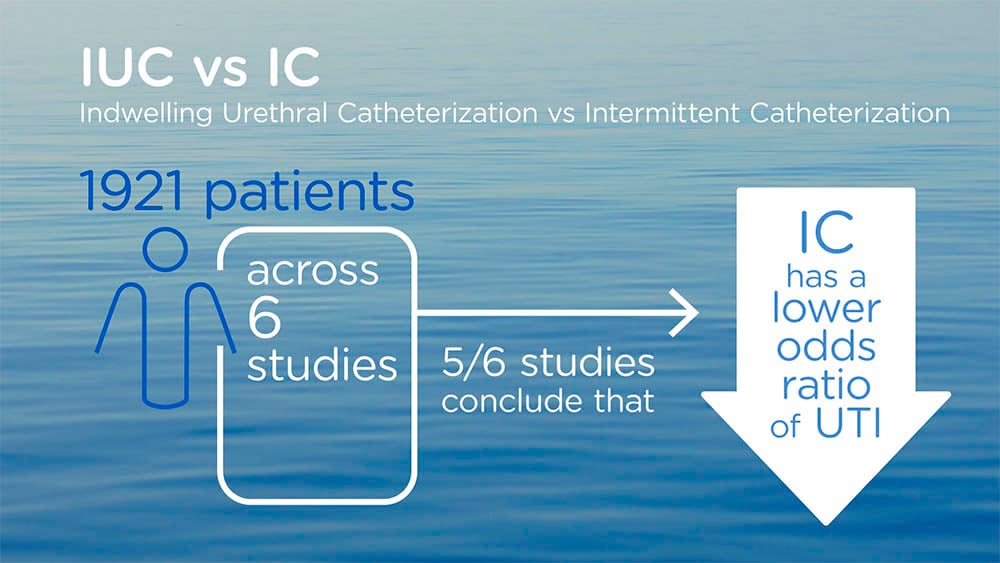Given the great variability in the definitions used to diagnose Urinary Tract Infection (UTI), this review will aid in providing an overview of the joint clinical evidence between the different bladder management methods with regard to UTI risk.
 The review by Kinnear et al., 2020 provides an overview of eligible studies comparing UTI incidence between neurogenic bladder patients utilizing bladder drainage methods of the indwelling urethral catheter (IUC), suprapubic catheter (SPC) or intermittent self‐catheterization (IC). Given the great variability in the definitions used to diagnose UTI, this review gives an overview of the joint clinical evidence produced during a 30-year period.
The review by Kinnear et al., 2020 provides an overview of eligible studies comparing UTI incidence between neurogenic bladder patients utilizing bladder drainage methods of the indwelling urethral catheter (IUC), suprapubic catheter (SPC) or intermittent self‐catheterization (IC). Given the great variability in the definitions used to diagnose UTI, this review gives an overview of the joint clinical evidence produced during a 30-year period.
Catheter‐associated UTIs are the most common healthcare‐associated infections worldwide
associated with increased hospital admissions, cost, morbidity and mortality. Also, the number of patients affected by neurogenic bladder continues to grow and includes several patient groups such as multiple sclerosis, Parkinson’s disease and stroke: Many of these patients will require a catheter-based drainage and thereby an increased risk of more frequent health care visits and decreased quality of life due to infections and other sequelae of catheter-use. Given the high frequency and impact of this type of infection, a chief consideration in the selection of the drainage method will be the prevention of UTI.
The Gold Standard for prevention of UTI
For Intermittent catheterization (IC) the bladder volumes cycle in close approximation to normal functioning, and the lack of a constant urethral foreign body is thought to preserve the urethral sphincter and reduce UTI rates. This is in accordance with the guidelines of both the European Association of Urology (EAU) and the American Urological Association (AUA), which describe IC as the gold standard with regard to the prevention of UTI. However, criticism has been raised that the literature cited by these guidelines is weak, shining a light on the importance of this recent systematical review of the literature spanning between 1986 and 2019.
Kinnear et al., 2020 represents the first systematic review to systematically compare the impact of catheter‐based bladder drainage methods on the rate of urinary tract infections (UTIs) amongst patients with neurogenic bladder. The studies reviewed enrolled over 2000 patients with neurogenic bladder due to spinal cord injury and the results concluded that the use of IC is associated with lower rates of UTI than IUC and SPC.




